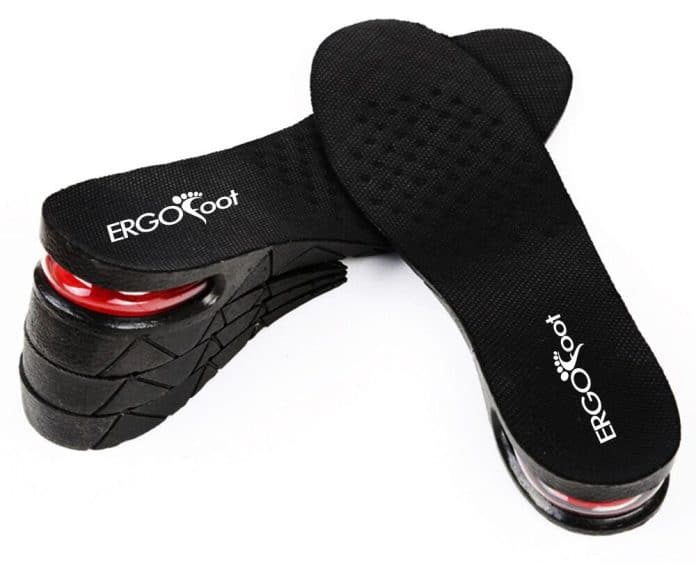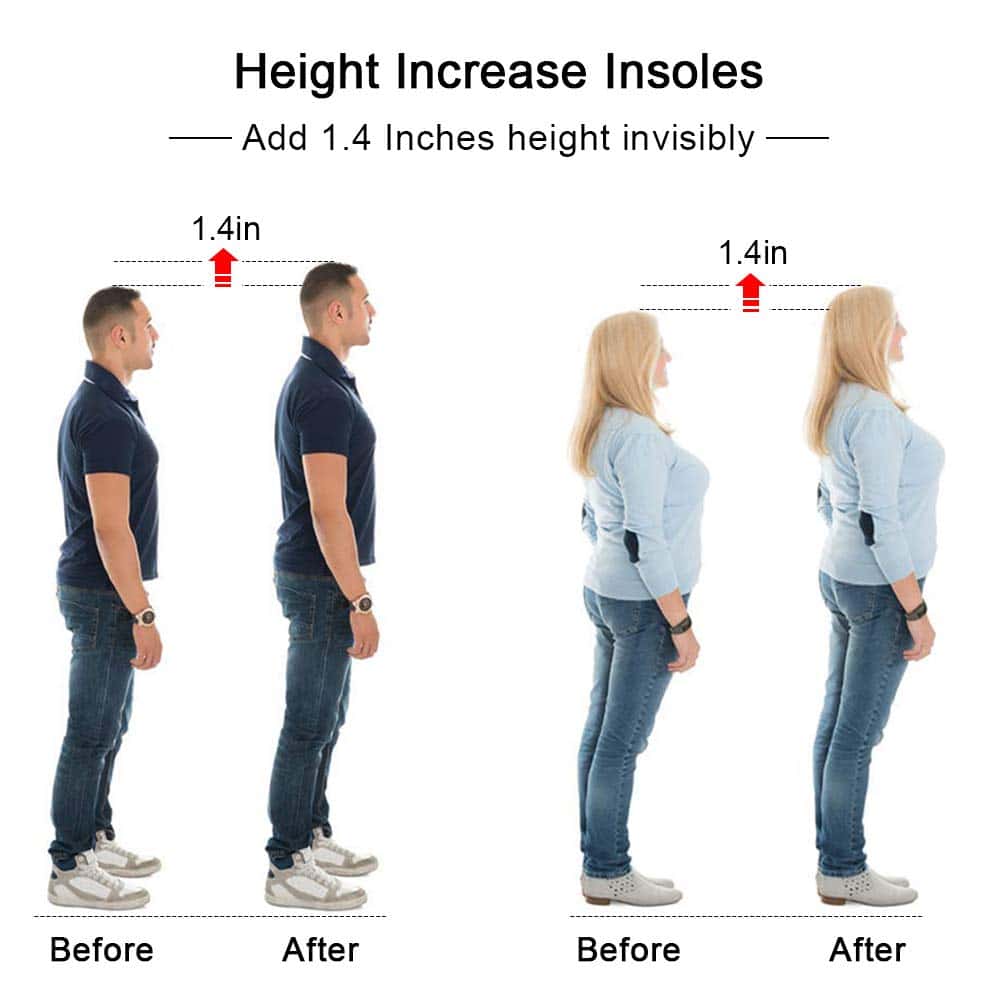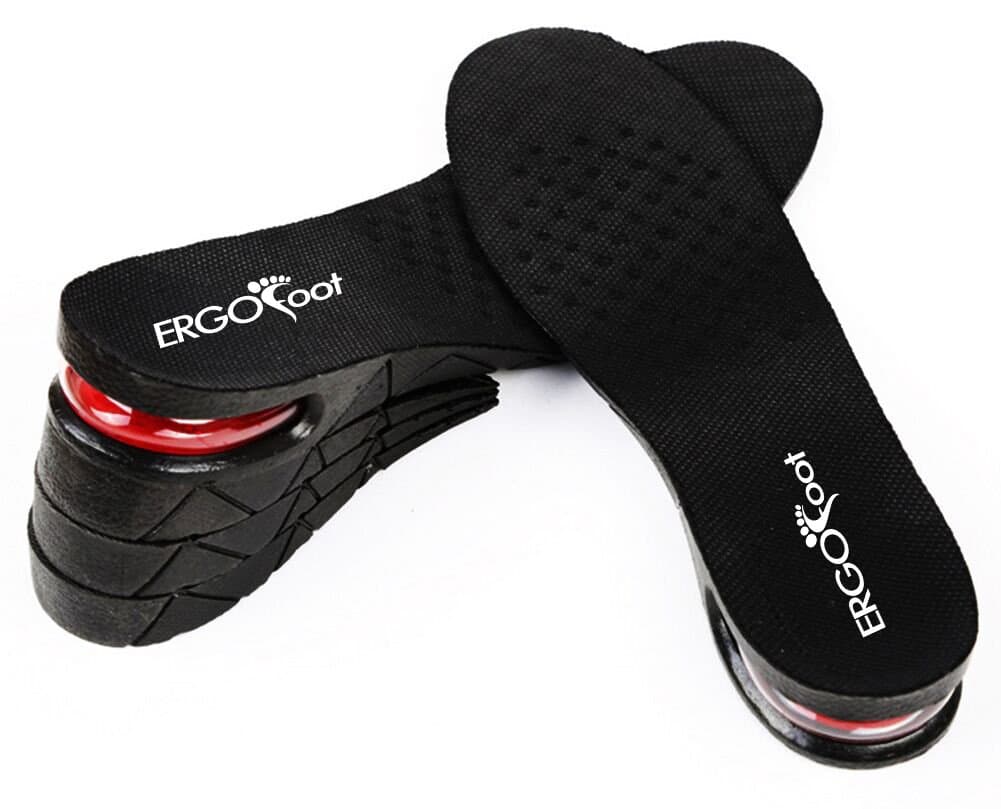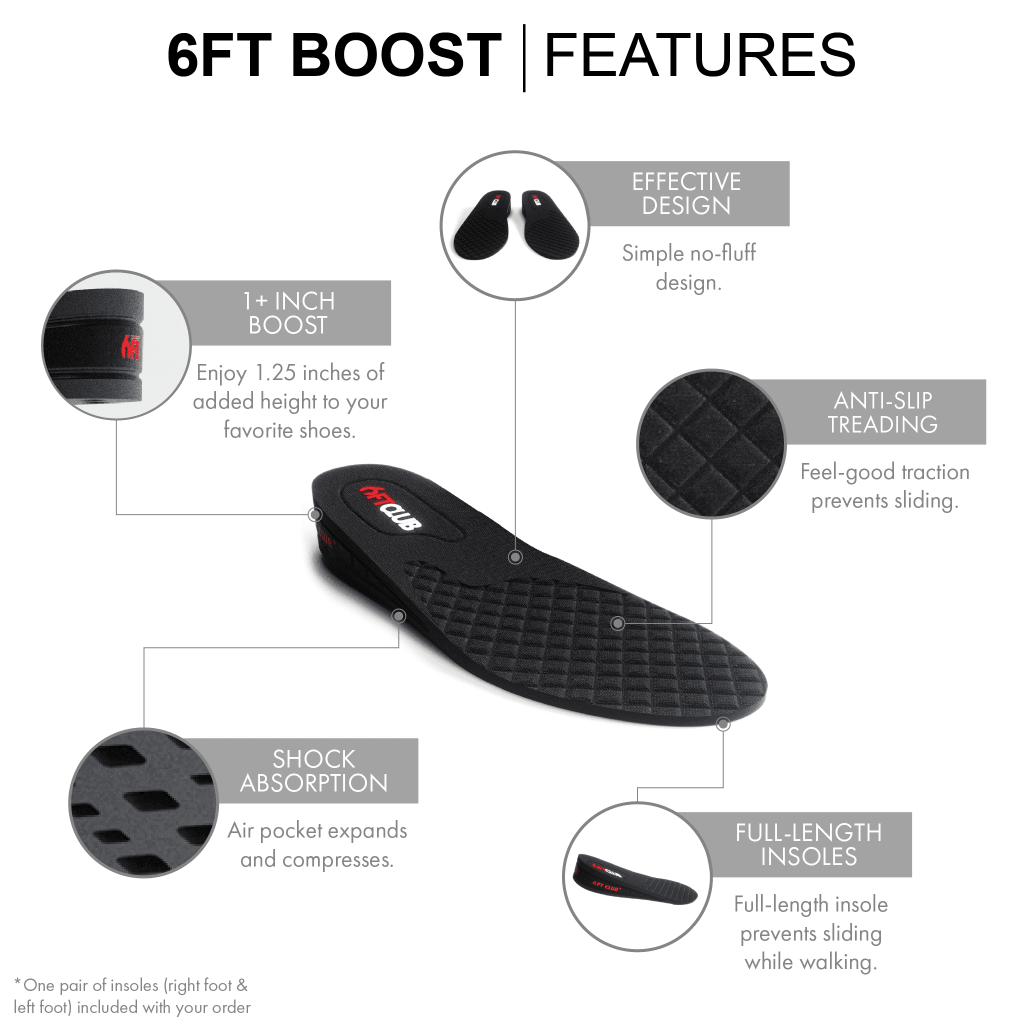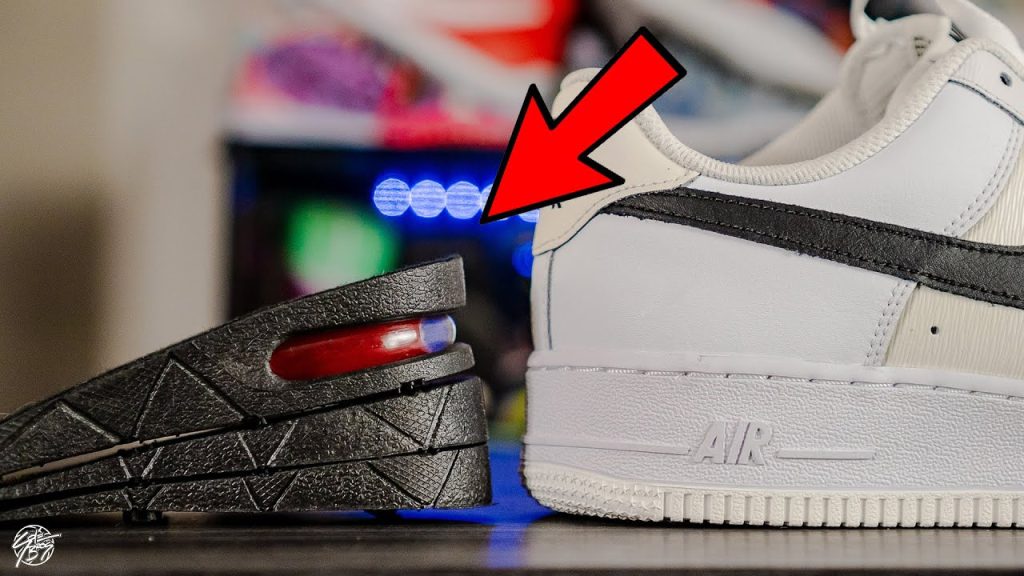Imagine instantly gaining a few extra inches in height just by slipping on a pair of insoles. It sounds almost too good to be true.
In this article, we’ll explore the fascinating world of insoles and uncover just how much height they can add.
Whether you’re looking to boost your confidence or seek a more comfortable stride, discovering the truth behind this age-old question might change how you view your shoe collection.
Understanding Insoles and Their Purpose
1.1 What Are Insoles?
Insoles, also known as shoe inserts or footbeds, are removable inserts placed inside footwear to provide additional support, cushioning, and foot comfort.
They are designed to enhance the shoe’s fit while addressing standard foot issues such as flat arches, high arches, and foot pain. Insoles are made from different materials and come in various shapes and sizes to cater to individual needs.
1.2 Importance of Insoles in Footwear
The use of insoles in footwear is essential for several reasons. Firstly, they provide cushioning and shock absorption, reducing the impact on your feet while walking or running. This primarily benefits individuals who engage in sports or spend long hours standing. Insoles also help distribute pressure evenly across the foot, preventing discomfort and potential problems.
Furthermore, insoles offer arch support, crucial for maintaining proper foot alignment and preventing issues like flat feet or fallen arches. They help to stabilize the foot and correct biomechanical imbalances, reducing the risk of pain and injuries. Insoles can also improve the overall fit of a shoe, filling any gaps or spaces that may cause blisters or rubbing.
2. Types of Insoles
2.1 Cushioned Insoles
Cushioned insoles are designed to provide extra padding and shock absorption. They are often made from materials like foam, gel, or air pockets to provide cushioning and minimize the impact on your feet.
Cushioned insoles are particularly beneficial for individuals with foot conditions such as plantar fasciitis, arthritis, or general foot fatigue.
2.2 Arch Support Insoles
Arch support insoles are specifically designed to support the arches of the feet. They help to distribute weight evenly and reduce strain on the arches. Arch support can be especially beneficial for individuals with flat feet or high arches, as it promotes proper foot alignment and reduces the risk of pain or discomfort.
2.3 Heel Cups and Inserts
Heel cups and inserts are insoles that focus primarily on supporting the heel area. They provide cushioning and stability to the heel, reducing the risk of heel pain or conditions like plantar fasciitis. Heel cups are often made from materials with shock-absorbing properties, such as gel or silicone, to alleviate pressure and provide added comfort.
2.4 Orthotic Insoles
Orthotic insoles are specifically designed to address biomechanical issues and provide customized support to the feet. They are often recommended for individuals with more severe foot problems or conditions, such as overpronation or supination. Orthotic insoles are typically made from a mold or impression of the foot, ensuring a tailored fit and maximum support.
2.5 Gel or Silicone Insoles
Gel or silicone insoles are made from soft, flexible materials that provide excellent shock absorption and cushioning properties.
They are particularly effective in alleviating pressure points and reducing discomfort in sensitive foot areas, such as the ball or heel. Gel or silicone insoles can be great for individuals seeking maximum comfort and impact reduction.
3. Factors Affecting Insole Height
3.1 Material of the Insole
The material of the insole can play a significant role in its height. Different materials have varying thicknesses, affecting how much height is added when the insole is inserted into a shoe. For example, foam or gel insoles tend to be thicker than cushioned or leather insoles, resulting in a more significant height increase.
3.2 Insole Thickness
The thickness of the insole itself is another crucial factor determining the height it adds. Insoles come in different thickness options, ranging from thin to thick. Thicker insoles will naturally add more height compared to thinner ones. Choosing a thickness that provides the desired height increase and fits comfortably in your shoes is essential.
3.3 Customization Options
Specific insoles offer customization options, allowing you to trim or adjust the height to fit your needs. These customizable insoles typically have marked guidelines that can be easily cut to fit different shoe sizes or address specific foot conditions. This versatility ensures a more personalized fit and height adjustment.
3.4 Footwear Type
The type of footwear you plan to use the insoles with can also influence the height added. Different shoe styles have varying depths and designs, which may accommodate specific insoles better than others. For example, athletic shoes or boots usually have more space to accommodate thicker insoles, while dress shoes may require slimmer insoles to maintain a proper fit.
3.5 Foot Conditions
Individuals with specific foot conditions may require insoles to address their particular needs. Depending on the foot condition, insoles may need thicker or have specific structural features to provide adequate support and alleviate symptoms.
These specialized insoles can add height while also addressing the underlying foot condition.
4. Typical Height Addition of Insoles
4.1 General Height Increase
On average, insoles can add anywhere from 0.25 inches to 1.5 inches of height. The actual height increase will depend on various factors, such as the type and thickness of the insole, the size of your shoes, and your foot structure. It is important to note that the height added by insoles is not solely for appearance but also for providing comfort and support.
4.2 Varying Heights by Insole Type
Different insoles may provide varying height increases due to their specific designs and functions. For example, cushioned insoles generally add a minimal height increase, typically ranging from 0.25 to 0.5 inches.
Depending on the specific arch support structure, arch support insoles can add around 0.5 to 0.75 inches. Orthotic insoles can provide significant height increases, often between 0.75 to 1.5 inches, as they are designed to address more severe foot issues.
5. Measuring Insole Height
5.1 Understanding Insole Measurements
Measuring insole height is relatively simple and requires a ruler or measuring tape. It is essential to measure the height accurately, as this will help you determine if the insole fits your desired needs.
Insole height is typically measured from the bottom surface of the insole to the highest point, excluding any contours or indentations.
5.2 Using a Ruler to Measure Insole Height
To measure the height of an insole, place the ruler vertically against a flat surface. Align the bottom edge of the insole with the zero mark on the ruler, ensuring the insole is level and not tilted. Read the measurement at the highest point of the insole, indicating the height added when inserted into a shoe.
5.3 Comparing Different Insole Sizes
When comparing different insole sizes, it is essential to consider the height measurement of your shoe size.
A larger shoe size may accommodate thicker insoles, while smaller sizes may require slimmer insoles to maintain a proper fit. Refer to the manufacturer’s size guide and consult customer reviews or recommendations.
6. Considerations for Insole Users
6.1 Comfort and Fit
When choosing insoles, comfort, and fit should be a top priority. Selecting insoles that provide adequate cushioning, support, and stability is crucial.
Ensure the insoles are the correct size for your shoe and fit comfortably without crowding the shoe or creating pressure points. Trying different insole options and walking around to gauge comfort can help you make an informed decision.
6.2 Shoe Size Adjustment
Insoles can slightly alter the fit of your shoes, particularly if they add significant height. It is essential to consider this when choosing the size of your shoes.
If you plan to use insoles regularly, you may need to select slightly larger shoes to accommodate the additional height and volume provided by the insole.
6.3 Accommodating Foot Conditions
If you have specific foot conditions or require targeted support, it is advisable to consult with a podiatrist or healthcare professional before choosing insoles.
They can provide recommendations based on your needs and help determine the ideal insole type, height, and customization options to address your foot condition.
7. Are Insoles the Only Option?
7.1 Other Methods for Height Increase
Insoles are not the only option for height increase. Some individuals may opt for elevator shoes, which feature built-in height-boosting components. These shoes are designed to add height while maintaining a natural appearance discreetly. Additionally, height-increasing insoles are designed for lifting the heel or adding height to specific foot areas.
7.2 Pros and Cons of Insoles vs. Other Options
Insoles offer several advantages over other height-increasing options. They are versatile and can be easily transferred between different pairs of shoes. Insoles also provide additional support and cushioning, benefiting foot health and reducing discomfort.
However, elevator shoes may provide a more immediate and noticeable height increase, as they are built directly into the shoe design. The choice between insoles and other options ultimately depends on individual preferences, comfort, and desired results.
8. Practical Experience and User Feedback
8.1 Real-Life Experiences with Insoles
Many individuals who have used insoles report positive experiences and benefits. Users often mention improved comfort, reduced foot pain, and increased support.
Insoles have benefited individuals with plantar fasciitis, flat feet, or heel pain. Selecting the correct type of insole and ensuring a proper fit to maximize the benefits and address specific foot concerns is essential.
8.2 Customer Reviews and Testimonials
Reading customer reviews and testimonials can provide valuable insights into different insole options’ effectiveness and satisfaction levels.
It is advisable to seek reviews from individuals with similar foot conditions or specific height requirements to understand the product’s performance better. Customer feedback can also help narrow down the options and select the most suitable insole for your needs.
9. Conclusion
Insoles are a valuable accessory that can enhance your footwear’s comfort, support, and fit. They come in various types, each offering different benefits and height increases. When selecting insoles, it is essential to consider factors such as material, thickness, customization options, and foot conditions.
Measuring insole height accurately and ensuring a comfortable fit is crucial for a positive experience. Insoles are not the only option for height increase, but they offer versatility and additional benefits beyond simple height enhancement. You can find the right insoles to improve your overall foot health and comfort by exploring different insole options and considering personal preferences and foot conditions.
10. Frequently Asked Questions (FAQs)
10.1 How much height can insoles add?
Insoles can add anywhere from 0.25 inches to 1.5 inches of height, depending on various factors such as the type, thickness, customization options of the insole, shoe size, and individual foot structure.
10.2 Do insoles work for everyone?
Insoles work for most individuals, but their effectiveness may vary depending on individual foot conditions and specific needs. It is advisable to consult with a podiatrist or healthcare professional to determine the most suitable insole type for your specific requirements.
10.3 Can insoles be cut to fit different shoe sizes?
Specific insoles offer customization options and can be trimmed or cut to fit different shoe sizes. Always refer to the manufacturer’s guidelines and instructions before making any alterations to the insole.
10.4 Are there insoles specifically designed for specific foot conditions?
There are insoles specifically designed to address various foot conditions such as plantar fasciitis, flat feet, or high arches. These specialized insoles provide targeted support and can help alleviate specific symptoms or discomfort associated with the particular foot condition.
10.5 How long do insoles typically last?
The lifespan of insoles depends on factors such as the quality of the materials used, frequency of use, and individual wear patterns. On average, insoles can last anywhere from a few months to a year. It is advisable to monitor the condition of the insoles regularly and replace them when they show signs of wear or reduced effectiveness.

